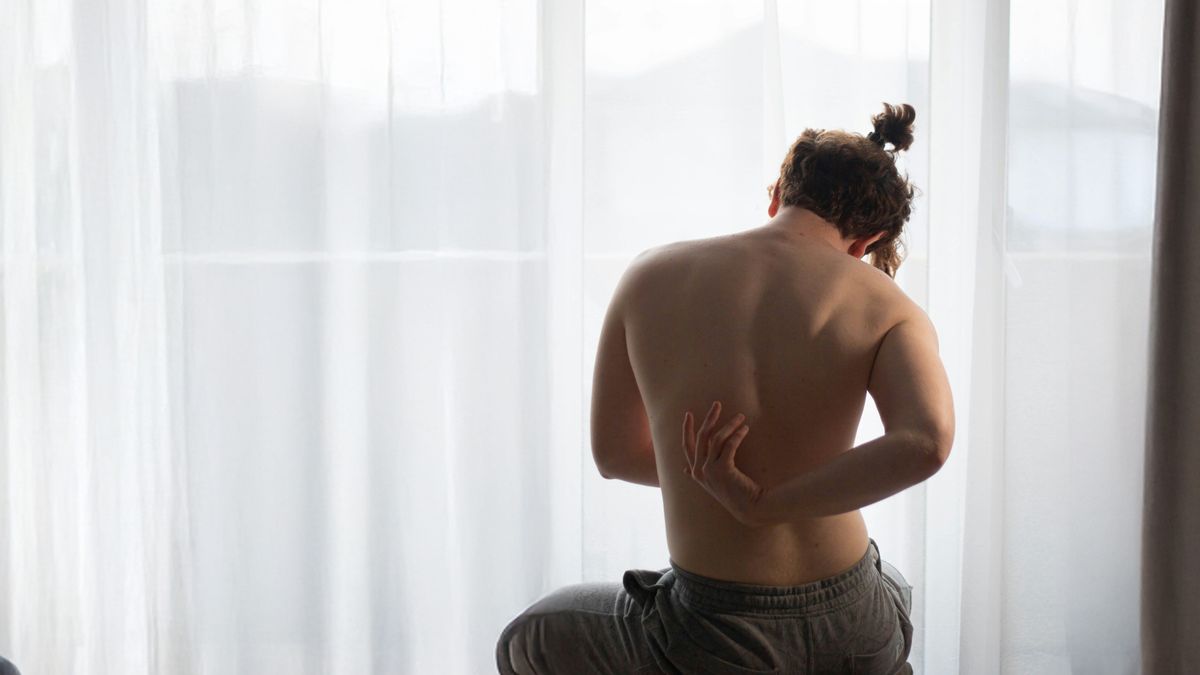Trigger Points and Muscular Tension: Causes, Symptoms, and Effective Therapy

Trigger Points and Muscular Tension – Introduction & Causes
Muscular tension is one of the most common complaints in modern society. Studies indicate that approximately 70–80% of adults experience neck, shoulder, or back pain at some point in their lives. These discomforts are not only unpleasant but can significantly reduce quality of life, limit work capacity, and potentially lead to chronic conditions over time.
A primary cause of these muscular issues is myofascial trigger points. Trigger points are small, localized knots in the muscle that can generate pain both at the site itself and in distant regions of the body. This phenomenon, known as referred pain, complicates diagnosis because the actual source of discomfort often does not coincide with the location where the patient perceives pain.
There are two main types of trigger points: active and latent. Active trigger points cause spontaneous pain, while latent trigger points are initially painless but can provoke symptoms or movement restrictions under stress or physical load. Typical features of a trigger point include palpable hardened muscle fibers, localized tenderness, reduced range of motion, local twitch response upon pressure, and referred pain to other regions.
Trigger points arise from a complex interplay of mechanical, biological, and psychological factors. The main causes can be grouped into several categories:
Mechanical Overload
Repetitive movements, unilateral strain, or intensive sports activity can lead to minor injuries in the muscle fibers, called microtraumas. The body attempts to repair these damages, but insufficient recovery or persistent strain can result in permanent muscle knots and trigger points. A classic example is an office worker sitting for long hours, tensing the neck and shoulders, leading to chronic overload.
Static Postures and Lack of Movement
Prolonged sitting or standing in fixed positions reduces blood flow to the muscles and causes local oxygen deprivation. This promotes accumulation of pain mediators such as substance P, bradykinin, or calcitonin gene-related peptide (CGRP). At the same time, inactivity inhibits muscle metabolism, impairing regeneration.
Psychological Stress
Chronic stress activates the sympathetic nervous system, increasing muscle tone, particularly in the neck, shoulders, and back. Sustained tension promotes trigger point formation and exacerbates existing discomfort.
Sleep Deprivation and Inadequate Recovery
Sleep is essential for muscular recovery. During deep sleep, metabolic waste products are cleared, and muscle fibers regenerate. Lack of sufficient sleep disrupts these processes and increases susceptibility to trigger points.
Injuries and Malalignment
Acute muscle injuries, post-surgical changes, or poor posture can facilitate trigger point formation. Compensatory movement patterns often overload other muscles, leading to new trigger points.
On the cellular level, trigger points result in increased tension in individual muscle fibers, localized oxygen deprivation, accumulation of metabolites, and pain mediators. This creates a vicious cycle: affected fibers remain contracted, blood flow is restricted, pain signals are amplified, and regeneration is further hindered.
Trigger Points and Muscular Tension – Symptoms, Diagnosis, and Beginning of Therapy
Symptoms of Trigger Points
Trigger points produce a wide range of symptoms that go beyond localized muscle tightness. Common symptoms include:
- Local pain: Tender muscle spots, often palpable as small knots or hardened strands.
- Referred pain: Pain radiates to other regions of the body. For example, a trigger point in the shoulder blade area can cause pain down the arm.
- Movement restrictions: Affected muscles show reduced flexibility and limited range of motion.
- Muscle fatigue and weakness: Muscles tire more quickly and cannot perform effectively.
- Neurological symptoms: Tingling, numbness, or tension sensations may occur.
Diagnosis
Diagnosis involves a combination of patient history, physical examination, and functional tests. Pain locations are identified, muscle fibers are palpated, range of motion and strength are assessed. Imaging techniques such as ultrasound elastography or MRI can support the evaluation by visualizing structural changes.
Effects
Trigger points affect not only muscles but overall well-being. Chronic pain often leads to compensatory postures, which overload other muscle groups and create new discomfort. Psychological factors such as stress, anxiety, and sleep disturbances intensify pain perception, maintaining the tension-pain cycle.
Therapeutic Approaches
The treatment of trigger points pursues two main goals: deactivation of trigger points and restoration of muscular balance. Key therapy methods include:
- Manual trigger point therapy: Targeted pressure and massage release hardened muscle areas.
- Dry Needling: Fine needles are inserted into trigger points to relieve muscle contractions and enhance blood flow.
- Acupuncture or injections: Specialized interventions to reduce pain.
- Heat and cold therapy: Supports circulation and alleviates acute symptoms.
- Stretching and exercise therapy: Improves flexibility, reduces muscle tension, and promotes regeneration.
- Myofascial release techniques: Release fascial adhesions surrounding the muscles.
- Self-management: Exercises, posture correction, and stress reduction to prevent new trigger points.
Prevention
Regular physical activity, ergonomic work environment, stress management, and sufficient sleep are crucial to prevent trigger points. Controlled load during sports and short movement breaks during sedentary work also contribute significantly to prevention.
Trigger Points and Muscular Tension – Therapy, Prevention, and Conclusion
Continuation of Therapeutic Approaches
In addition to the previously mentioned methods, combined approaches are increasingly used to treat trigger points effectively. For example, manual therapy combined with dry needling or myofascial release techniques alongside exercise therapy can be particularly effective. The goal is to reduce local muscle tension while restoring long-term muscular function.
Self-Management and Home Exercises:
A key part of therapy is self-management. Recommended measures include:
- Regular stretching exercises to maintain muscle flexibility
- Targeted strength training to stabilize weakened muscle groups
- Posture awareness, especially during prolonged sitting or computer work
- Breathing and relaxation exercises to reduce muscle tension
- Short movement breaks during work hours
These measures not only promote healing of existing trigger points but also help prevent new ones.
Prevention in Daily Life
Preventive measures are crucial and include:
- Ergonomic workspace setup: proper chair, desk, and monitor height
- Regular physical activity: walking, gymnastic exercises, moderate strength training
- Stress reduction: meditation, yoga, or targeted relaxation techniques
- Adequate sleep and recovery: essential for muscle regeneration and removal of metabolic waste products
- Controlled exercise load: avoid overloading muscles and adjust training plans appropriately
Scientific Background
Multiple studies confirm the effectiveness of manual therapy, dry needling, and exercise therapy. These studies consider both local muscular adaptations and neuroplastic changes in the central nervous system. Research shows that trigger points not only affect local tissues but also influence central pain processing. Modern imaging techniques, such as ultrasound elastography, allow objective assessment of muscle stiffness and can document therapy success.
Conclusion
Trigger points develop due to a combination of overload, poor posture, psychological stress, and insufficient recovery. They cause local pain, restricted movement, and can significantly impact overall well-being. Targeted therapy, preventive strategies, and self-management allow effective management of trigger points. The combination of manual therapy, dry needling, stretching, strengthening, and stress management leads to sustainable pain reduction. Conscious attention to movement, relaxation, and ergonomic habits is crucial for long-term freedom from pain and improved quality of life.
Recommendation
If you'd like to treat your trigger points yourself without restrictions and thus avoid the occasional visit to a physiotherapist, we recommend the "TRIGGin - the trigger button" from ProCure med. This small but highly effective tool, which is applied to the trigger point using kinesiology tape, can exert its effects over a longer period of time without interfering with the wearer's daily routine. Whether during sports or in the office, this "little companion" can exert continuous, subliminal pressure on the affected area, thus relieving the corresponding tension.
Key Takeaways
- Trigger points are localized muscle knots that cause pain both directly and in distant areas through referred pain.
- Main causes: mechanical overload, static posture, psychological stress, poor recovery, and injury-related imbalance.
- Typical symptoms: local and radiating pain, reduced range of motion, muscle weakness, and neurological sensations like tingling.
- Diagnosis relies on palpation, pain mapping, and imaging (ultrasound or MRI) for structural assessment.
- Therapy goals: deactivate trigger points and restore muscular balance through manual techniques, dry needling, stretching, and strengthening.
- Self-management plays a key role: regular stretching, ergonomic posture, breathing techniques, and short activity breaks.
- Prevention strategies: daily movement, stress control, proper sleep, and controlled exercise intensity.
- Scientific research supports multimodal therapy — combining manual release, exercise, and neuroplastic retraining — for sustainable pain relief.
- Modern imaging such as ultrasound elastography enables objective tracking of therapy outcomes.
- Long-term result: targeted treatment and lifestyle adaptation can break the pain-tension cycle and restore quality of life.
Author: Lars Mayer
Founder at TRIGGin (Hanau, Germany) & Senior Designer at katana design (Hanau, Germany)




